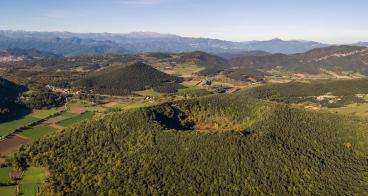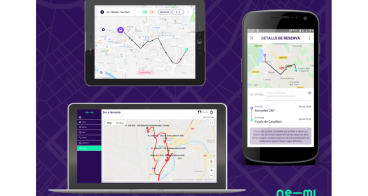Demand Responsive Transport: A game-changer for rural and peri-urban communities
Public transport in sparsely populated areas struggles to strike the right balance between minimum occupancy and attractive service level. With the renewed interest in Demand-Responsive Transport, this could change over the coming years. This insight explores how by combining increased flexibility with reasonable fares, DRT opens new possibilities in rural and peri-urban areas.
Demand Responsive Transport (DRT) is not a new concept. Already in the 1970, first DRT services have been launched in the US before spreading to other continents, including Europe. From the 2000s onward, internet and mobile technology have spurred a revival of interest in DRT, facilitating operators’ route optimisation and enabling users to book trips easily with their smartphones. Between 2019 and 2021, it is estimated that more than 450 DRT projects have been launched globally.
Flexibility is at the heart of DRT. Compared to traditional fixed public transport lines, DRT operates when required, i.e. when booked by users. As a result, the schedule of DRT services is more aligned with the actual demand, avoiding empty bus trips. In addition, some flexibility is also introduced to the routes, with pre-determined stops that can be served if needed or with pick up and drop off locations determined by users. Contrary to taxi services, users can expect longer waiting time between booking and pick-up. They are also likely to share the vehicle with other passengers during their trip, but ticket prices are closer to public transport than to a taxi service.
Due to its flexible nature, DRT is especially suited to serve low-demand contexts. Typically, these can be in sparsely populated rural areas (eg. La Garrotxa, Spain), or in urban areas at night (e.g. Berlin, Germany) when the regular public transport service is not operating.
Service design needs to match local conditions and expectations
The design of DRT services – including e.g. area coverage, price, booking options - varies according to local demand, specific needs in terms of accessibility, as well as local circumstances and socio-economic factors such as purchasing power. The amount of available subsidy needs to be carefully considered before choosing the exact type of DRT operations. In fact, a single DRT service always needs to strike a balance between reliability, low prices, and flexibility. The variety in DRT services (hybrid, semi-flexible, full-flexible) are mainly the result of different trade-offs between these objectives.
Which type of DRT is the most suitable will usually be determined by the specific use cases and the level of available subsidy. Download the full study below to learn more about all DRT service types.
Successful DRT services need more than a good algorithm
Evaluating the success of DRT implies to look at its impact beyond a mere comparison between costs and revenues. Assessing the benefits of DRT calls for a thorough evaluation of the socio-economic impacts such services bring to communities. Especially in remote rural areas, DRT can give access to education, jobs, and leisure activities to citizens who either cannot drive or cannot afford a private vehicle. The Smarta project illustrates the role DRT can play in such contexts.
Likewise, anticipating the performance of DRT services requires to look beyond only technical aspects such as the efficiency of routing algorithms. Importantly, booking options (via phone, internet, or mobile app) need to match the habits and expectations of the target user groups. For instance in the Coimbra region, Portugal, two third of users are 66 years old or older, highlighting the need to use accessible vehicles and to maintain phone booking options. Understanding users’ demographics also allows to tailor communication strategies to their specific profiles, ensuring high awareness level – and better uptake - of DRT services.
DRT can help social inclusion by facilitating economic opportunities
Especially in peri-urban and rural areas, too many of which are still lacking proper public transport connections, DRT can break the vicious circle of suboptimal offer, low demand, and social exclusion by offering public transport options closer to citizens’ needs.
DRT on its own won’t be a game-changer for rural and peri-urban communities but is a powerful lever as part of a larger toolkit of transport and socio-economic policies that can offer new opportunities to citizens living in sparsely populated regions.
Want to learn more about DRT? Access the full study in the file section below.
Published on 11 November 2022.






